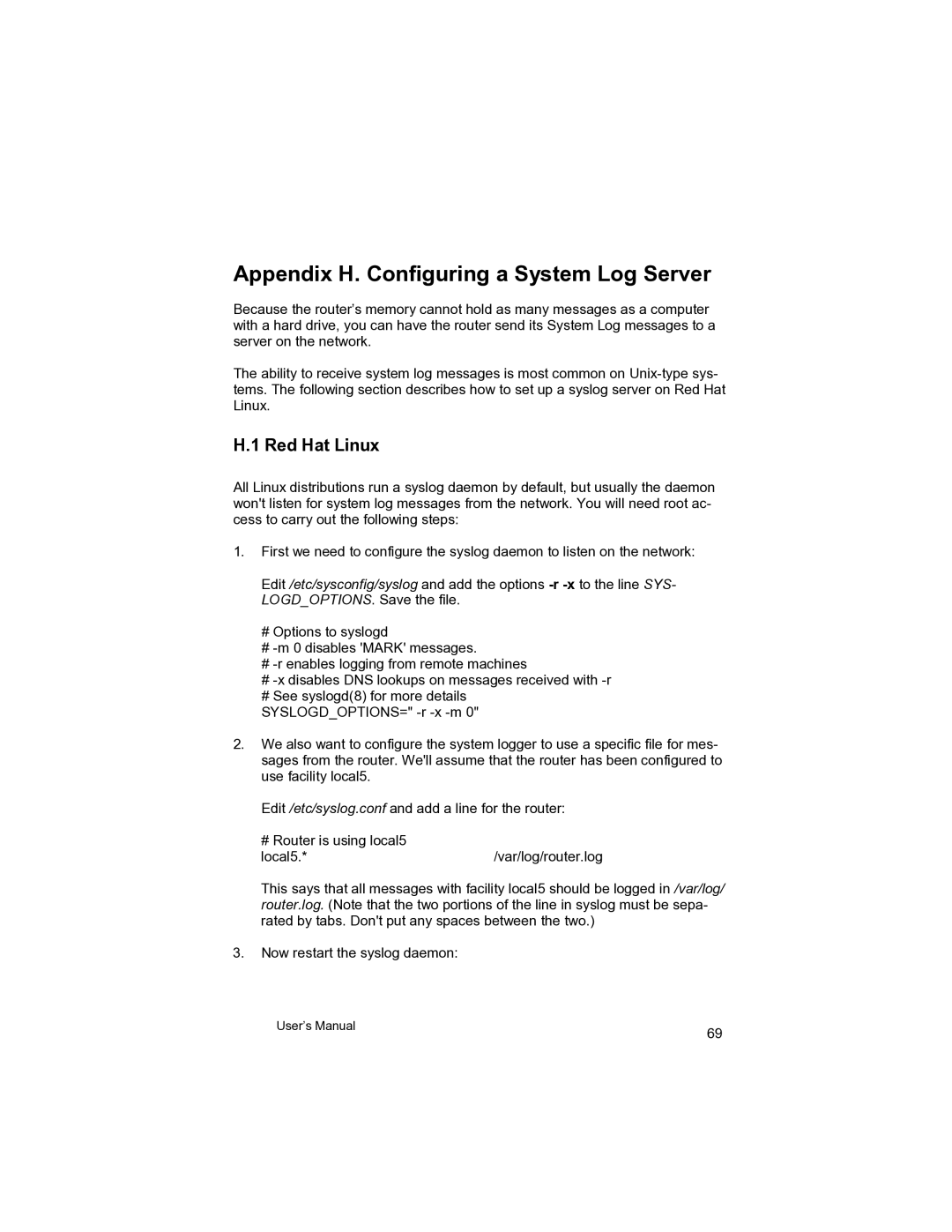Appendix H. Configuring a System Log Server
Because the router’s memory cannot hold as many messages as a computer with a hard drive, you can have the router send its System Log messages to a server on the network.
The ability to receive system log messages is most common on
H.1 Red Hat Linux
All Linux distributions run a syslog daemon by default, but usually the daemon won't listen for system log messages from the network. You will need root ac- cess to carry out the following steps:
1.First we need to configure the syslog daemon to listen on the network:
Edit /etc/sysconfig/syslog and add the options
#Options to syslogd
#
#
#
#See syslogd(8) for more details
SYSLOGD_OPTIONS="
2.We also want to configure the system logger to use a specific file for mes- sages from the router. We'll assume that the router has been configured to use facility local5.
Edit /etc/syslog.conf and add a line for the router:
# Router is using local5 |
|
local5.* | /var/log/router.log |
This says that all messages with facility local5 should be logged in /var/log/ router.log. (Note that the two portions of the line in syslog must be sepa- rated by tabs. Don't put any spaces between the two.)
3.Now restart the syslog daemon:
User’s Manual | 69 |
|
